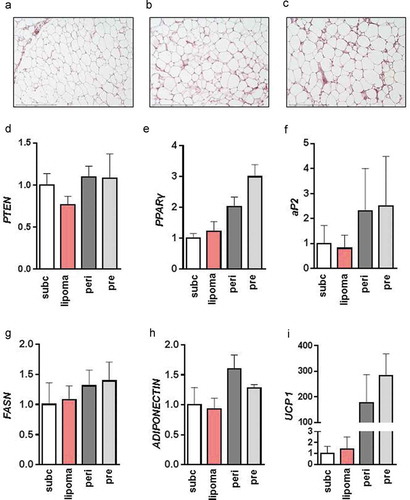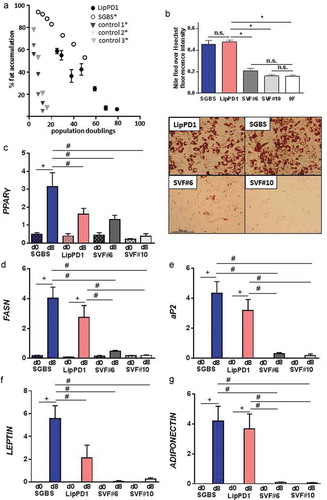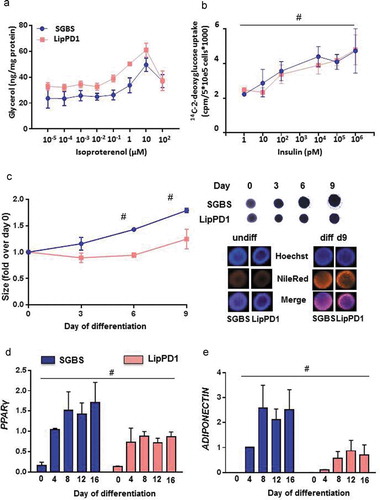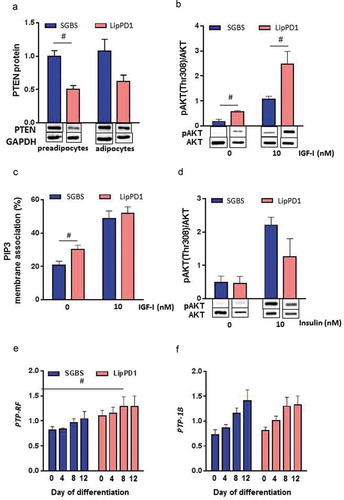Figures & data
Figure 1. Characterization of lipoma tissue from a patient with phosphatase and tensin homolog (PTEN) hamartoma tumour syndrome

Figure 2. Growth and adipocyte differentiation of LipPD1 cells during long-term culture

Figure 3. Functional characteristics of LipPD1 compared to SGBS adipocytes

Figure 4. PI3 K signalling is constitutively activated in LipPD1 preadipocytes

